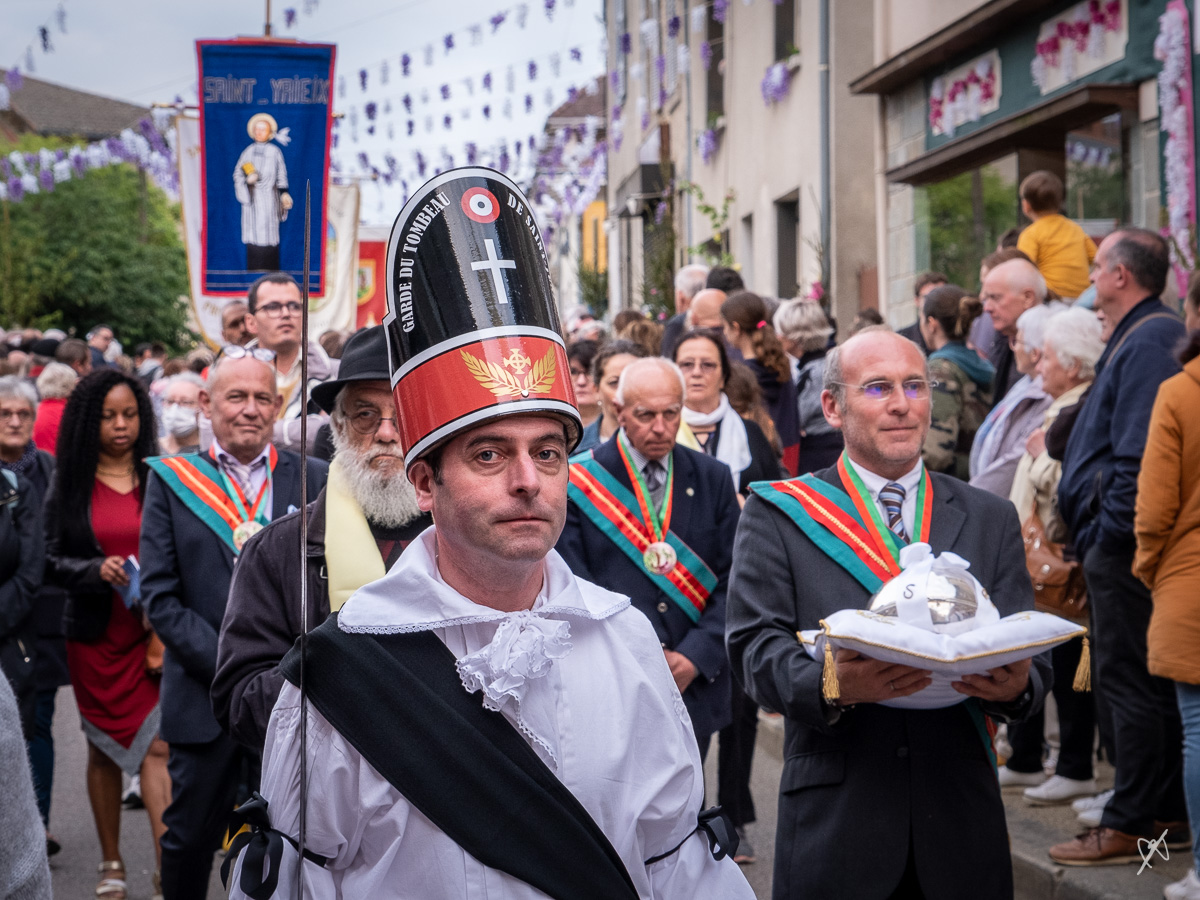
The parade consisted of around 500 people carrying the relics of local saints. From the town centre they descended to the bridge over the river Vienne, then on the far bank to the chapel of Notre Dame Arliquet on the outskirts of the town. After a ceremony in front of the chapel, the procession returned to the town centre by torchlight.
During the following weeks there will be similar events in other Limousin towns.
But what are Ostensions ?
Limousin ostensions (recognised by UNESCO as important cultural heritage) are essentially public processions displaying the relics of local saints. These relics are usually kept in the churches of Limousin. During the ostensions they are carried in procession in around twenty communes including Limoges and other localities.
Catholics and non-Catholics alike attend the procession of the relics that are accompanied by banners, flags and decorations. The preparation for these ceremonies and processions brings together people from different backgrounds in a spirit of friendly competition to stage the most spectacular event. More than a Catholic religious event, it is a very old cultural tradition : the origins of the Limousin ostensions go back to the Middle Ages, specifically to 12 November 994.
According to the legend, it was following an epidemic of ergotism that the tradition started. Ergot is a parasitic fungus that affects rye, a cereal that was widely consumed in the Middle Ages. In the autumn of 994, people who ate rye became ill and the disease was seen as a divine punishment. Faced with the severity of the epidemic, the bishop of Limoges at the time organised a gathering around the relics of several Limousin saints. These were presented in procession in the town and its surroundings. Following this and the return of the relics to their consecrated places, the epidemic ceased in December 994. This was the first ostension. From the 16th century onwards, the ostensions take place every seven years.
Click on a photo to see it large and you can then start a slideshow using the controls that appear at the top right of the page



